Table of Contents
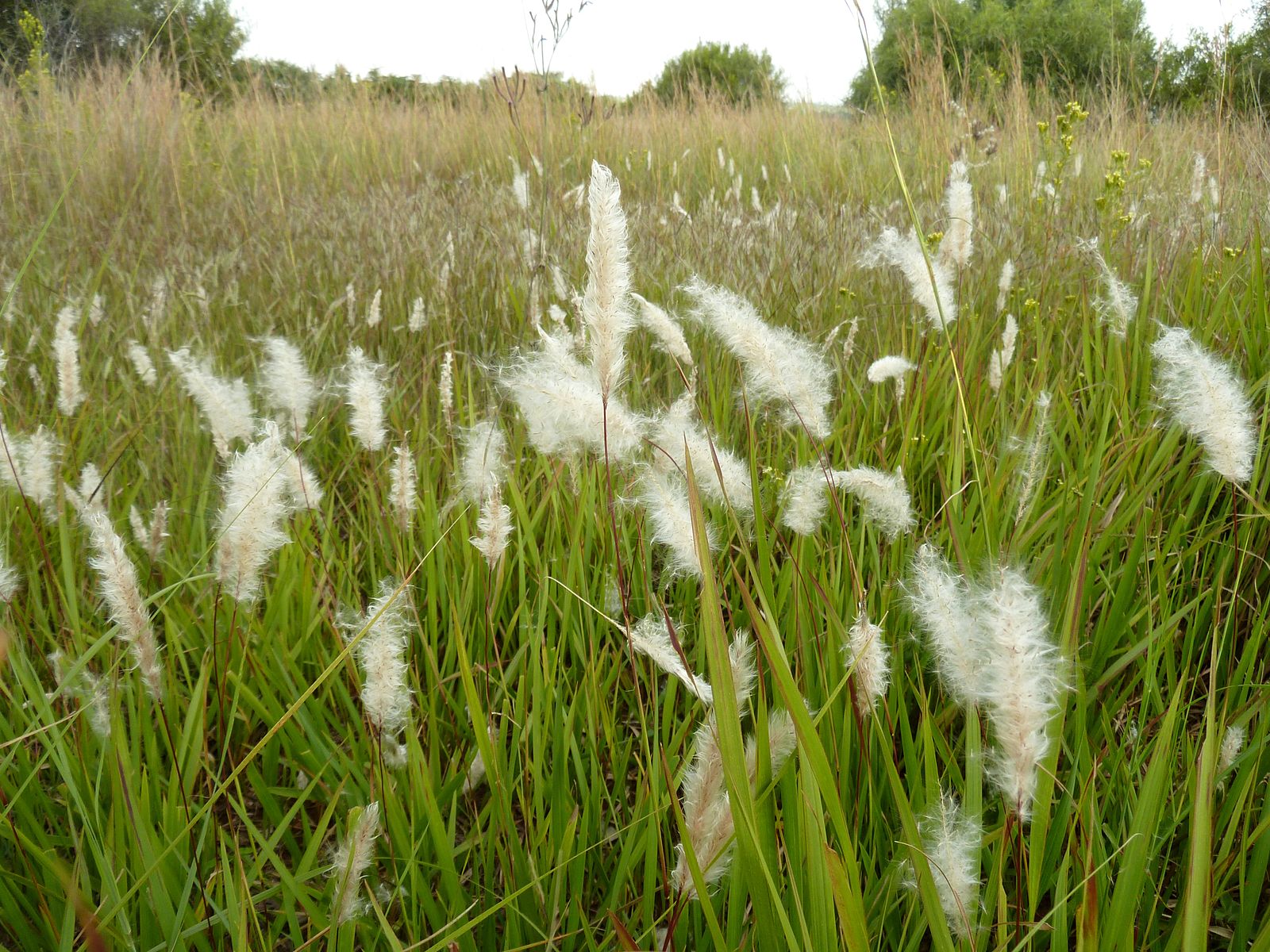 |
| Field of lalang Imperata cylindrica. (Image Credit: JMK) |
Here's an introductory video about this invasive plant:
Common Names
Lalang is known by a variety of common names:Lalang – most common in Singapore and Malaysia [6] [7]
Cogon grass – Philippines and the United States [8] [9] [10]
Alang-alang – Indonesia [11]
Other names include Blady grass, Speargrass, Japanese bloodgrass, kunai grass, cotton-wool grass, and more.
Ecology
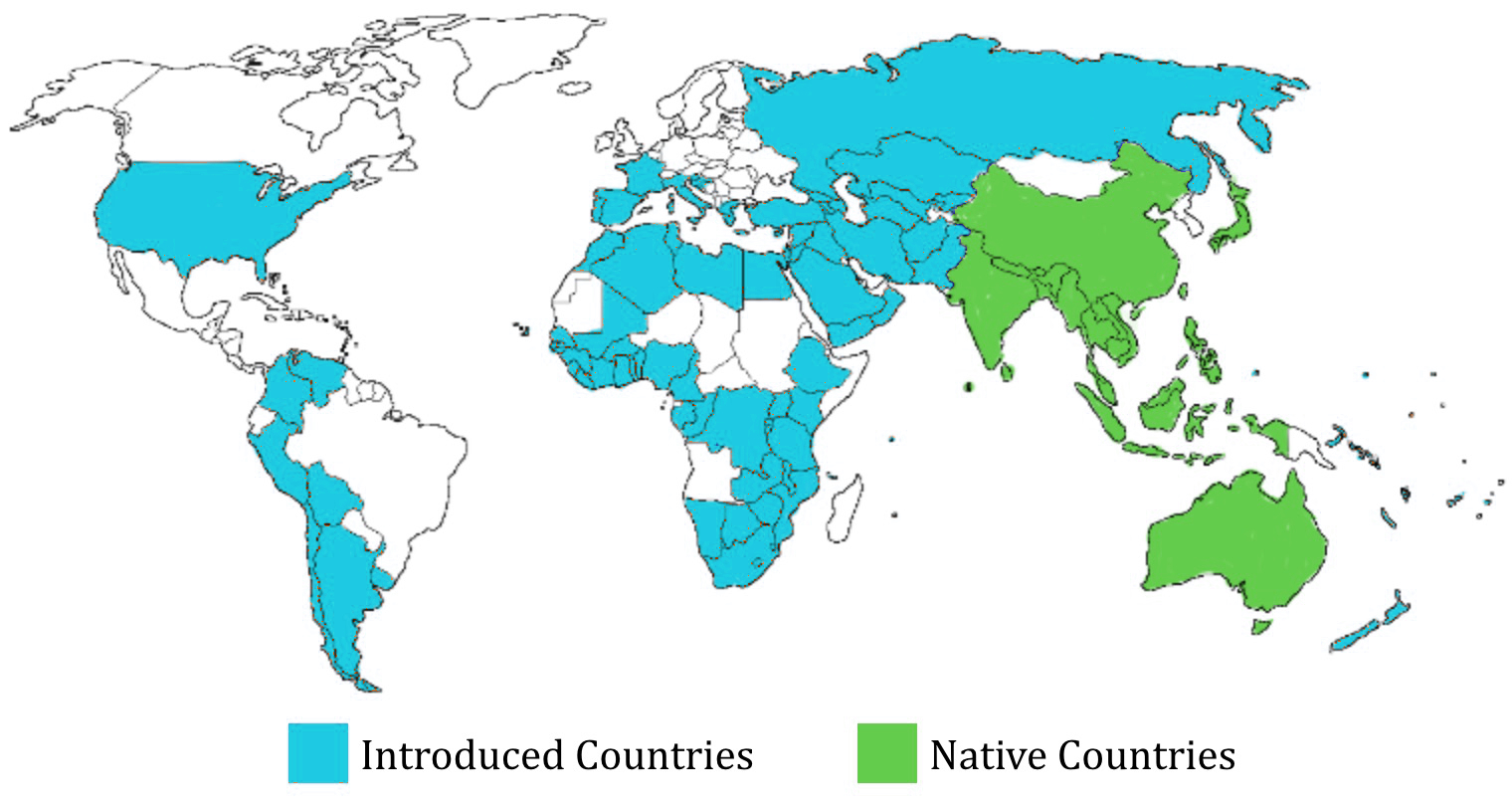 |
| Map of countries where Imperata cylindrica is native (green) and considered invasive (blue). Information obtained from Global Invasive Species Database. |
Habitat
Lalang can be found in warm areas with an annual rainfall of 75–200cm and in a large variety of habitats, from deserts and sandy shores to swamps, through a wide range of soil types[12] [13] . It is particularly prolific in areas affected by human use [14] .Lalang is reported to occupy over 500 million hectares worldwide [15] . In its native tropical Asia, it forms large swathes of natural grassland that occupy an estimated 35 million hectares, with the biggest areas in Indonesia and India. Lalang occupies about one-fifth of the total land area in Sri Lanka and the Philippines [16] . The amount of grassland in Asia is gradually increasing due to land clearing by wildfires, but is at the same time being cleared for permanent plantations and urban uses [17] .
As an Ecosystem
Lalang grasslands can be part of the natural plant succession from barren ground to forest [18] , but can also remain in this stage for hundreds of years [19] . In Singapore, abandoned plantations from the early part of 20th century were taken over by lalang grassland, which has in turn grown into early secondary forest mostly made of the tree Adinandra belukar [20] .In Nepal, these grasslands form an important part of the ecosystem, supporting endangered species such as the tiger Panthera tigris, greater one-horned rhinoceros Rhinoceros unicornis, the hispid hare Caprolagus hispidus and Bengal florican Eupodotis bengalensis [21] .
Lalang and Fire
These grasslands are extremely susceptible to fires, burning readily even when still green and not dry. Fire is an important part of their ecology as burning enhances the growth of new shoots and triggers flowering and seed production [22] . This plant may sacrifice some leaves to maintain a healthy amount of rhizomes for survival, and these leaves can serve as fuel for fires [23] . These leaves burn intensely and kills off almost all other vegetation. The rhizomes are protected from fires as they are buried deep in the soil, ready to sprout when the land above is cleared [24] . This video shows how well a lalang field can burn.Interaction with other plants
Lalang is known to be a vicious competitor with other plants. It directly competes for nutrients, light, water, and space [25] , and also produces substances that stop surrounding plants from growing [26] [27] . The rhizomes can even physically pierce through the roots of surrounding plants and cause fungal infections [28] . This makes it highly detrimental when it invades agricultural crops.Invasiveness
Lalang is listed as among the world’s top 100 most invasive species by the IUCN [29] and is listed as a pest weed in 73 countries [30] . Lalang spreads fast and is difficult to eradicate because its seeds are airborne and can spread widely. It can also spread without seeds using underground stems called rhizomes, which grow rapidly, and are difficult to completely eradicate [31] . In the United States, it was first accidentally introduced as packing material [32] . Later, it was deliberately introduced as forage and for soil stabilization and started spreading rapidly along roadways [33] .Because of its high competitiveness, lalang poses a huge problem to agriculture, particularly in Africa and the United States [34] [35] . Among the species it affects are maize, coconut, rice, oil palm, cassava, yams, teak, cocoa, kola, coffee cashew, and rubber, especially in the stage before the crops mature. Lalang reduces crop yield or even kills the plants entirely [36] . Because it burns easily, it also increases the risk of fire which can destroy vast amounts of farmland and reduces the viability of the soil [37] .
In Singapore
It is uncertain whether it is a native or introduced species in Singapore [38] . It does not appear to pose a large problem in Singapore, as it primarily grows in urban areas rather than the forested areas where most of Singapore’s rare and native biodiversity are found. Lalang is not a shade-tolerant plant and does not grow well in forest. So far, there are no documented harmful effects of lalang in Singapore.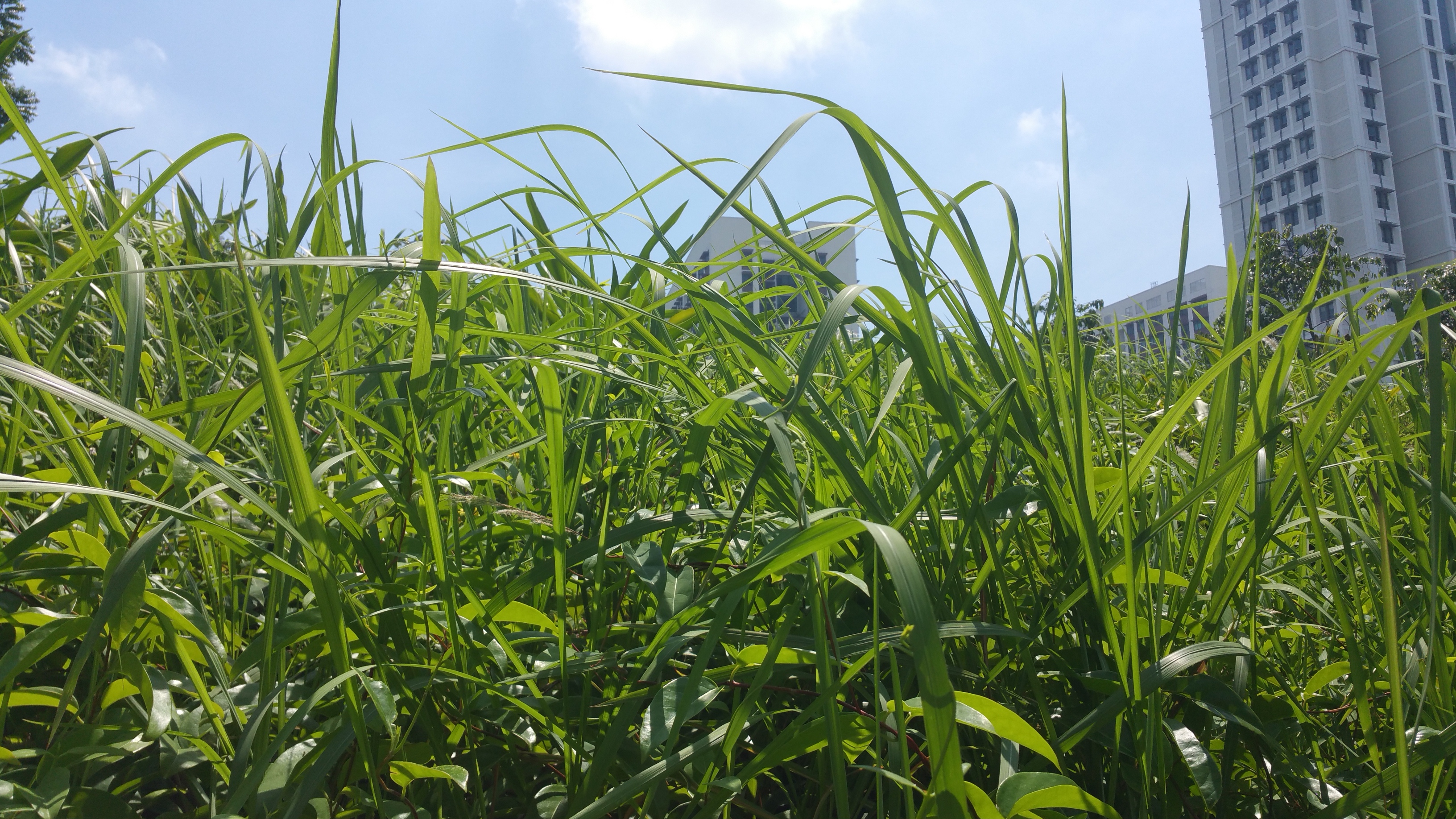 |
| Imperata cylindrica growing in Singapore along Clementi Road near University Town. (Photo credit: Amanda Lim) |
Management
Many methods of managing lalang in agricultural areas are used worldwide, and often varies by what the farm can afford. A combination of several of the different types of methods below are usually used [39] .Chemical Management
Herbicides are most often used to control the spread of invasive lalang, particularly on large farms. Sodium arsenite was one of the first chemicals used to control lalang, but was inefficient and highly toxic [40] . Later, glycophosate and imazapyr became more commonly used, particularly as they are both more efficient and are non-toxic to animal wildlife[41] . Many studies are being conducted on finding more efficient and targeted herbicide additives that can be used in conjunction with these two chemicals [42] [43] .Mechanical Management
Lalang is managed on many farms simply by mowing or burning. However, without removing the underground rhizomes, lalang cannot be effectively controlled and burning can even encourage regrowth. Small scale farms tended to manually cut the rhizomes up, then either left them on the surface to dry out or buried deep in the ground to make the rhizomes unable to regrow new stems [44] . However, it is difficult to completely eradicate all the rhizomes and is only useful in the short term. An alternative method is ‘pressing’, whereby leaves are pressed down and bent without breaking the blades to suppress growth while avoiding the growth of new shoots [45] .Cultural Management
Growing other plants that create shade over lalang is another method employed to control its growth. Plants in the bean family (legumes) are often used, such as Stylosanthes guianensis and velvet bean Mucuna pruriens [46] [47] [48] . Like lalang, S. guianensis// produces chemicals that suppress the growth of surrounding plants, combating lalang growth, but can be more easily removed afterwards by crops that provide shade or by grazing animals [49] [50] .Addtionally, these plants can grow on less fertile land and enrich the soil for future crops at the same time.
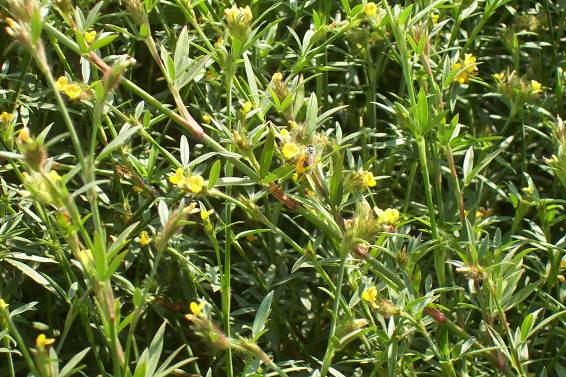 |
 |
| Stylosanthes guianensis, a plant commonly used to suppress Imperata cylindrica. (Image Credit: Tropical Seeds) |
Seed pod of velvet bean Mucuna puriens. (Image Credit: Shoba R) |
Human Uses
Despite all its negative impacts as an invasive species, lalang also has a lot of uses! Some varieties are cultivated as an ornamental plant in the US [51] . Singapore also uses them as ornamental plants in parks, and to stabilize slopes [52] . It was commonly used in the United States to stabilize slopes and reduce soil erosion, but its invasiveness led it to be banned in the state of Florida [53] . |
| An ornamental variant of Imperata cylindrica in the National University of Singapore. (Photo Credit: Amanda Lim) |
Dried lalang leaves are also used to thatch roofs in Southeast Asia, as animal fodder, and even to make paper [56] . Paper making is only done on a small scale however, as the difficulty in handling means that it is more efficient to use lalang grassland to grow trees instead [57] . Below is a video about how lalang is used to make paper in the Philippines:
How to Identify Lalang
Leaves
Lalang leaf blades are long and slender, growing about 150cm long or more and about 4-10mm wide [58] . They have rough, finely sawtoothed edges and a mid-vein that runs slightly-off center down the length of the leaf [59] . The leaves contain substances (silicates) which make them tough and unpalatable to herbivores[60] . Lalang stores carbon that is used for photosynthesis using a method that makes it more efficient at photosynthesis (the C4 pathway) and grow better in sun than under shade [61] .
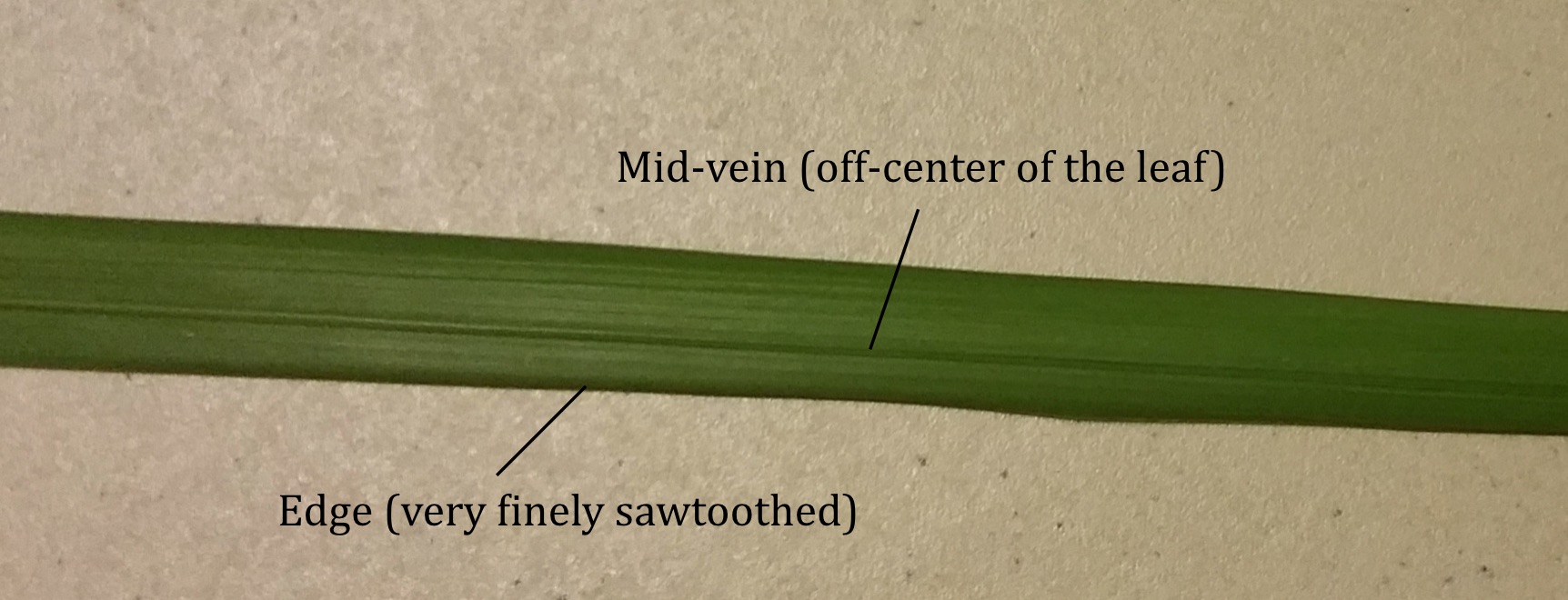 |
| Section of Imperata cylindrica leaf. Note particularly the off-center mid-vein. (Photo credit: Amanda Lim) |
Flowers
Flowering does not happen often, usually only as a response to periods of stress such as burning, cutting or drought [62] . The flowers form an inflorescence (a collection of tiny, reduced flowers). Each inflorescence can be found at the end of a long stalk. They are cylindrical, about 3-20cm long, 0.5-2.5cm in diameter, and covered with white hairs [63] . Each flower has two anthers (the part of the flower that produces pollen), which distinguishes it from other members of its genus [64] . The colours of the flowers themselves can vary from pinkish red in ornamental variants, to beige, to white.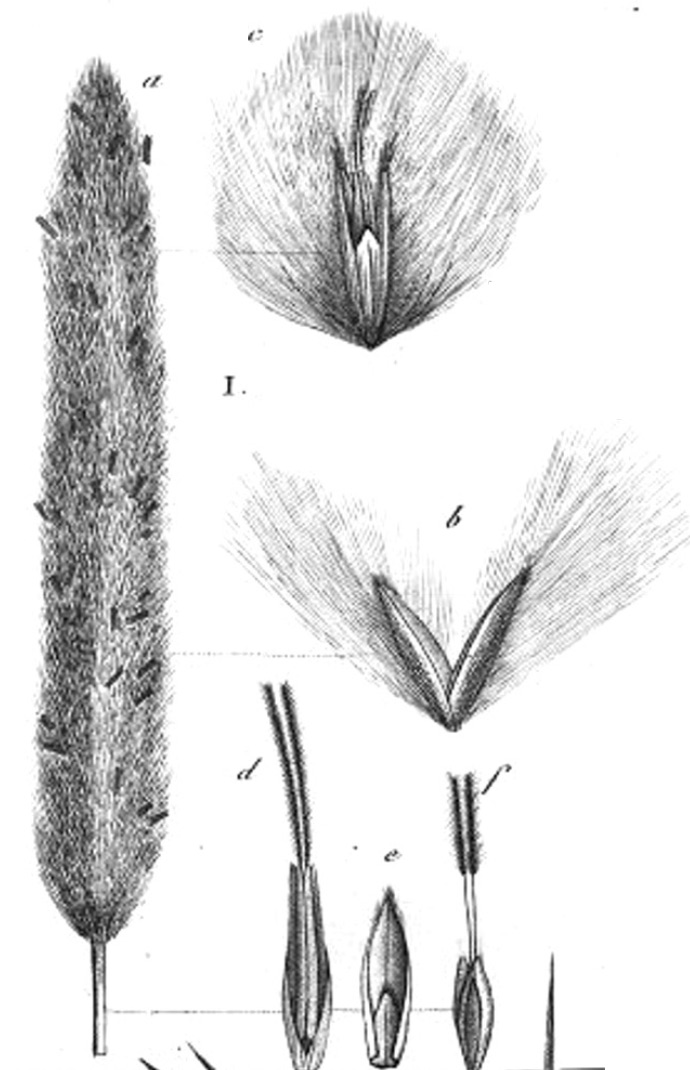 |
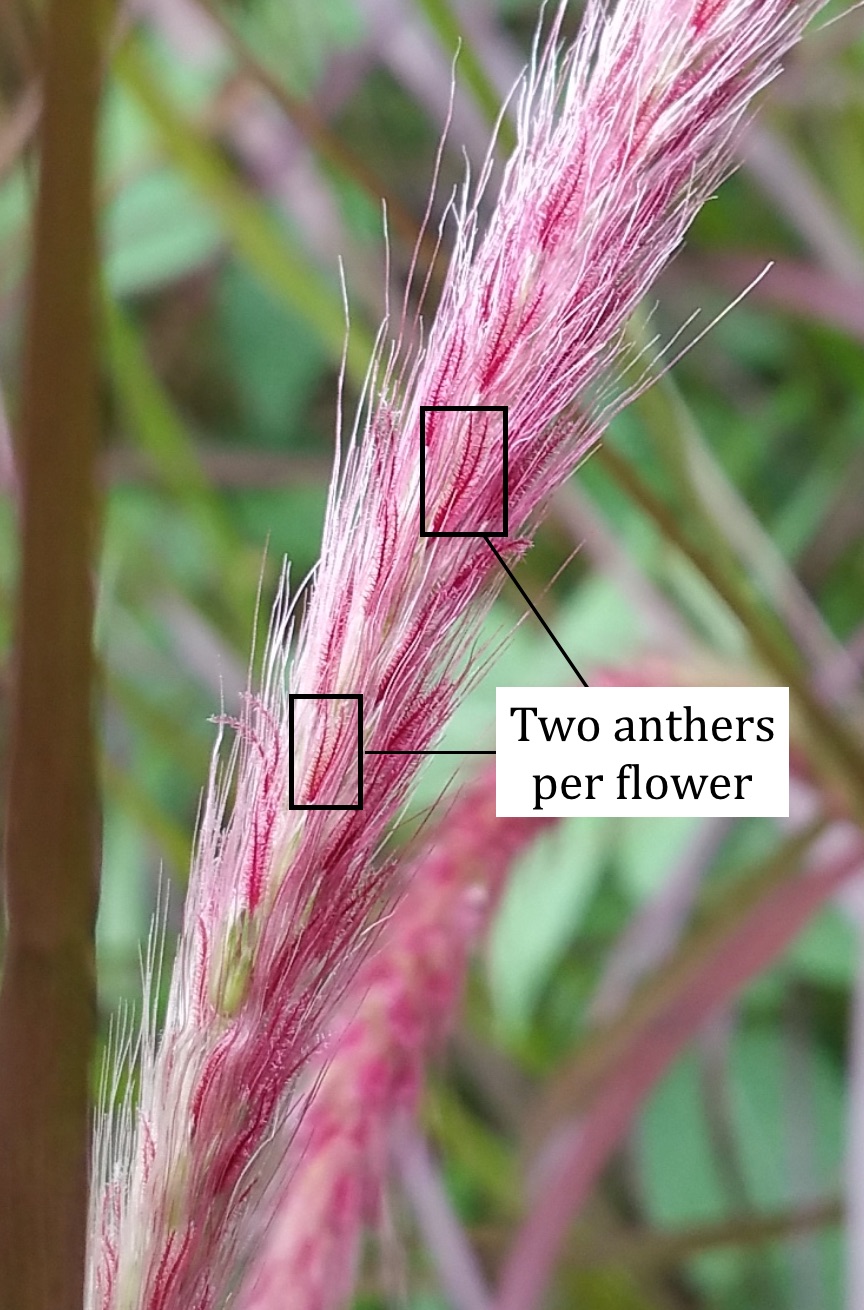 |
| Plate featuring the flowers and seeds of Imperata cylindrica. (Source: de Beauvais (1812) Essai d'une Nouvelle Agrostographie.) |
Inflorescence of an ornamental variant of Imperata cylindrica. Note the two anthers. (Photo credit: Amanda Lim) |
Rhizomes and Seeds
Like many other grasses, lalang can reproduce both asexually and sexually. Asexual reproduction is through an underground stem, known as a rhizome. A single rhizome can produce many stems and new clonal rhizomes. These rhizomes are white, scaly, and branching, and are about 2–4.5mm in diameter. About 50% of them can be found in the top 20cm of the soil, but can sometimes reach a meter deep [65] . Lalang can also disperse through seeds, which are small and airborne, attached to long white hairs[66] . A single plant can produce up to 3000 seeds [67] . Whether rhizomes or seeds are the primary mode of reproduction for lalang appears to be uncertain [68] .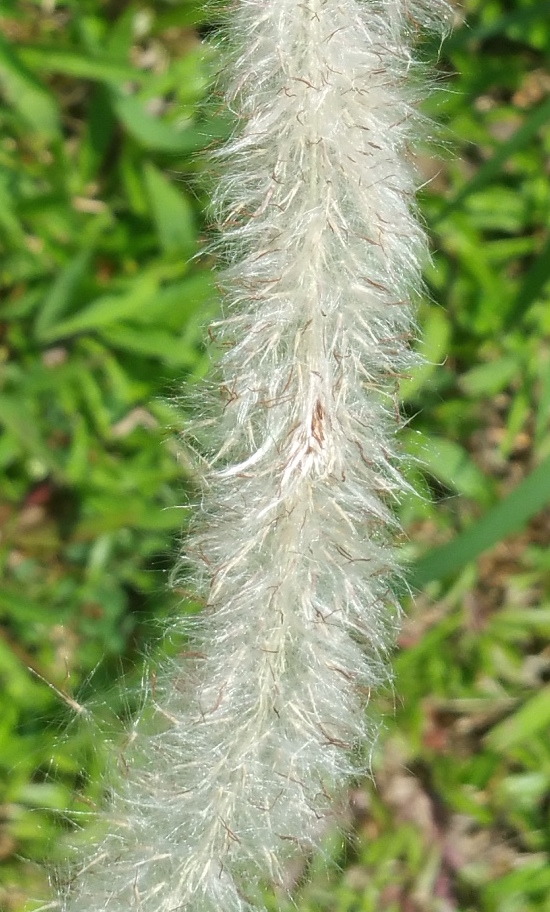 |
 |
| Close look at the seeds of Imperata cylindrica. (Photo credit: Amanda Lim) |
Imperata cylindrica rhizomes, roots, and seeds. (Image Credit: L. M. Marsh, Florida Department of Agriculture and Consumer Services, Bugwood.org) |
Taxonomy
Nomenclature
The basionym of Imperata cylindrica is Lagurus cylindricus, very briefly listed by Linnaeus in Systema Naturae [69] [70] . The currently accepted name is Imperata cylindrica (L.) P. Beauv, described by Palisot de Beauvois in 1812 [71] [72] . It is often also found as Imperata cylindrica (L.) Raeusch, as this name was only invalidated recently due to a lack of a reference to the basionym in a section of the description [73] . A long list of synonyms can be found at the World Checklist of Selected Plant Families [74] . |
| Original entry of Imperata cylindrica as Lagurus cylindricus in Systema Naturae. (Source: Linnaeus (1759) Systema Naturae.) |
Taxonavigation
Kingdom: PlantaePhylum: Magnoliophyta
Class: Equisetopsida
Subclass: Magnoliidae
Superorder: Lilianae
Order: Poales
Family: Poaceae
(Subfamily: Panicoideae)
(Supertribe: Andropogonodae)
(Tribe: Andropogoneae)
Genus: Imperata
Unbracketed rank names were obtained from Tropicos (24), and bracketed rank names obtained from the classification of the Poaceae by Soreng et al.[78] .
The exact relationship of the genus Imperata to its sister taxa is unknown, classified as incertae sedis (latin meaning ‘of uncertain taxonomic position’ [79] ) within the tribe Andropogoneae by Soreng et al. [80] .
Phylogenetic Analyses
The two phylogenetic trees shown below were generated by Hodkinson et al. (2002) [81] (left) and Burke et al. (2016) [82] (right) and show little consensus with each other. Hodkinson et al. used nuclear ribosomal DNA and chloroplast introns to create a maximum parsimony tree. The more recent tree generated by Burke et al. used complete chloroplast genomes and combined the results from maximum parsimony, maximum likelihood, and Bayesian analytical methods. The majority of the branches on the tree by Burke et al. have extremely strong support with all three analytical methods, and uses a large amount of genetic data, suggesting that it is a very robust representation of the relationships between the species featured in the trees.In both trees, Imperata cylindrica is highlighted in red. A few important plant species representing genera common to both trees are also highlighted for comparison between the trees and with Imperata cylindrica.
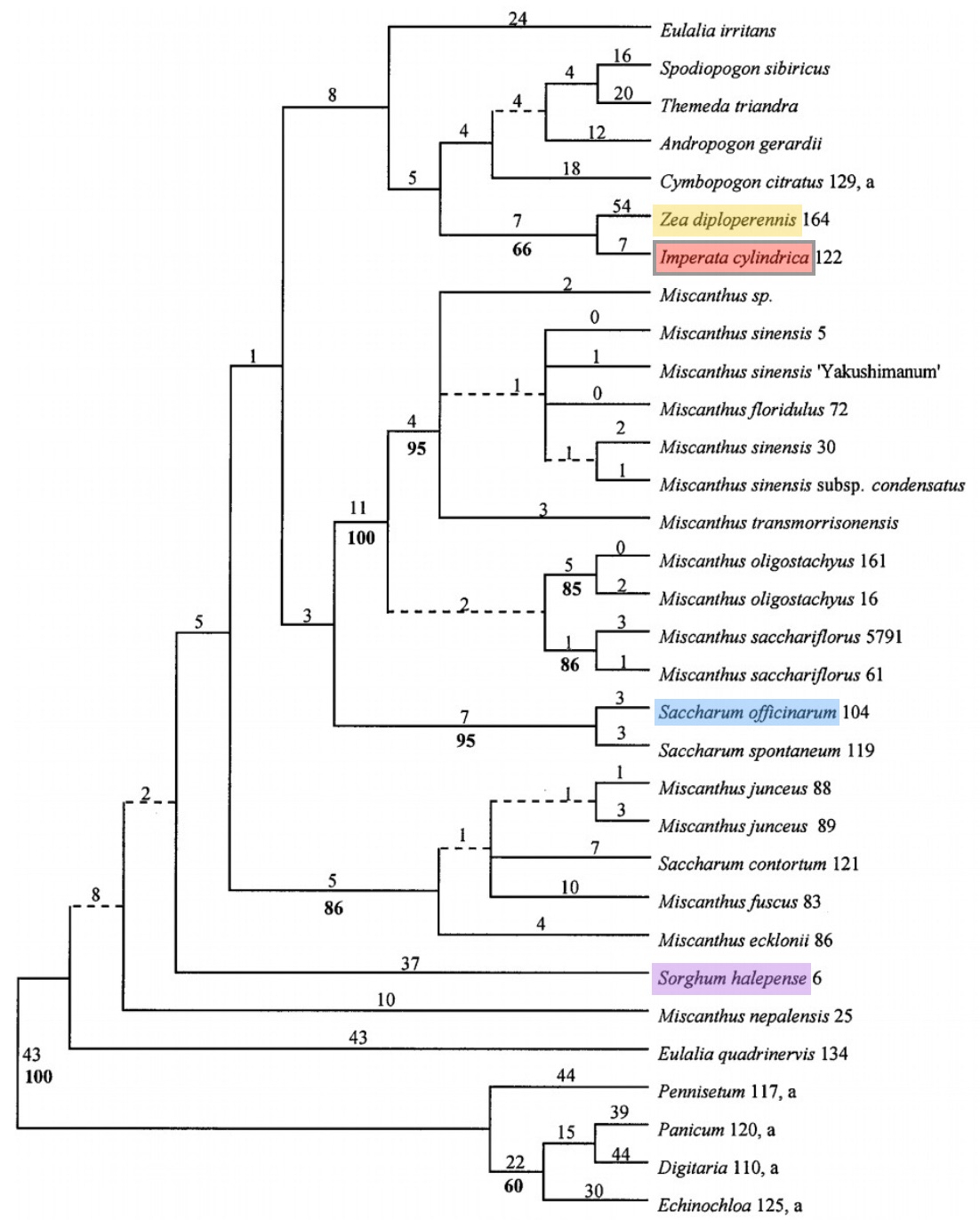 |
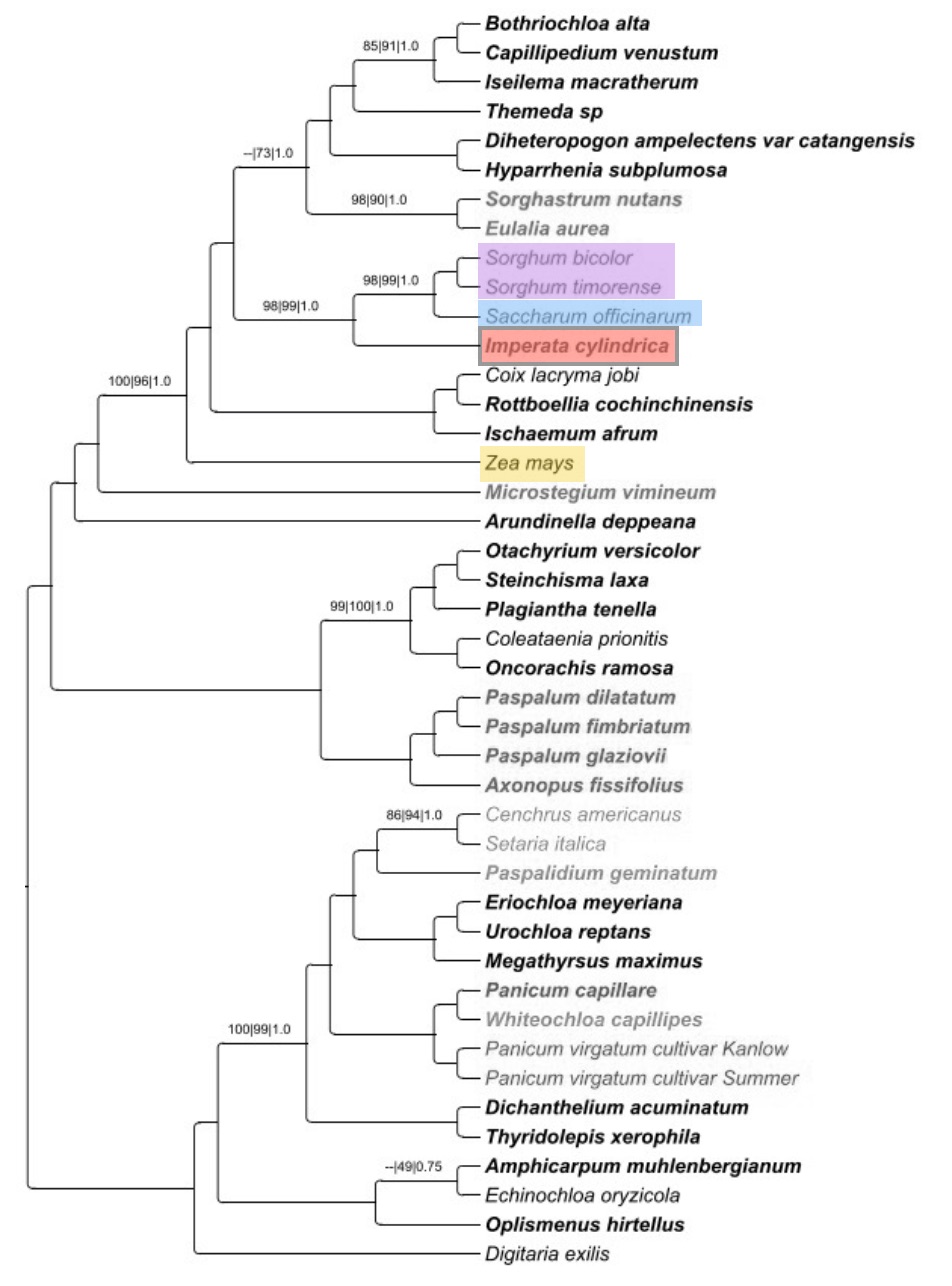 |
| Phylogenetic tree adapted from Hodkinson et al (2002), using ITS nuclear ribosomal DNA and trnL-F intron and spacer regions of plastid (chloroplast) DNA. One of 32,039 equally most parsimonious trees. Numbers above branches indicate steps, while numbers below branches indicate bootstrap percentages above 50%. Solid lines indicate groups found in all shortest trees, dotted lines indicate those which are not. (Used with permission from the author) |
Phylogenetic tree adapted from Burke et al (2016), generated using complete chloroplast genomes. All tree branches have bootstrap value of 100 and posterior probabilities of 1.0 except where indicated (Maximum Likelihood | Maximum Parsimony | Bayesian posterior probability). |
| Highlighted species: Red – Imperata cylindrica. Yellow – Zea diploperennis, maize Zea mays. Blue – sugarcane Saccharum officinarum. Purple – Sorghum halepense, Sorghum timorense, Sorghum Sorghum bicolor. |
|
- Field of lalang Imperata cylindrica. Image uploaded by JMK, on Wikimedia Commons at: https://commons.wikimedia.org/wiki/File:Imperata_cylindrica,_pluime,_Groenkloof_NR.jpg. Available for use under Creative Commons Attribution-Share Alike 3.0 Unported License.
- Cogongrass (Imperata cylindrica). Video uploaded by the UF/IFAS Center for Aquatic and Invasive Plants and the Florida Fish and Wildlife Commission, Invasive Plant Management Section, on Youtube, at: https://www.youtube.com/watch?v=g_3gs8c4hqg. Available for use under Standard YouTube License.
- Map of countries where Imperata cylindrica is native and considered invasive. Information obtained from the Global Invasive Species Database at: http://www.iucngisd.org/gisd/speciesname/Imperata+cylindrica. Map modified based on a map from www.outline-world-map.com. Map image available for use with credit under terms of the website.
- Cogongrass Fire. Video uploaded by the Alabama Forestry Commission, on Youtube at: https://www.youtube.com/watch?v=uAMlrDyllSg. Available for use under Standard YouTue License.
- Imperata cylindrica growing in Singapore along Clementi Road near University Town. Photo by Amanda Lim.
- Stylosanthes guianensis. Image uploaded by Tropical Seeds, on Flickr at: https://www.flickr.com/photos/96332760@N06/8857224742/in/set-72157633741775019/. Available for use under Creative Commons Attribution 2.0 Generic license.
- Mucuna puriens. Image uploaded by Shobha R, on Wikimedia commons at: https://commons.wikimedia.org/wiki/File:Mucuna-pruriens-fruit.jpg. Available for use under Creative Commons Attribution 2.0 Generic license.
- Ornamental variant of Imperata cylindrica in the National University of Singapore. Photo by Amanda Lim.
- Kanami Koronadal – Cogon Paper Making. Uploaded by Peter Miguel, on Youtube at: https://www.youtube.com/watch?v=Bzlmd7cB6gI. Available for use under Standard YouTube License.
- Section of Imperata cylindrica leaf. Photo and annotation by Amanda Lim .
- Plate featuring the flowers and seeds of Imperata cylindrica. De Beauvois P (1812). Essai d'une Nouvelle Agrostographie pp. 8, 165, 177, pl. 5, f. 1. Retrieved from the Biodiversity Heritage Library at: http://www.biodiversitylibrary.org/page/394087#page/290/mode/1up. Available in the Public Domain.
- Inflorescence of an ornamental variant of Imperata cylindrica. Photo and annotation by Amanda Lim.
- Seeds of Imperata cylindrica. Photo by Amanda Lim.
- Imperata cylindrica rhizomes, roots, and seeds. Photo uploaded by Marsh, Florida Department of Agriculture and Consumer Services, Bugwood.org, on Wikimedia Commons at: https://commons.wikimedia.org/wiki/Category:Imperata_cylindrica#mediaviewer/File:Imperata_cylindrica_2308122.png. Available for use and annotation under Creative Commons Attribution-Share Alike 3.0 Unported License.
- Original entry of Imperata cylindrica as Lagurus cylindricus in Systema Naturae. Linnaeus C (1759). Systema Naturae, ed. 2 vol. 2. Pp.878. Retrieved from the Biodiversity Heritage Library at: http://www.biodiversitylibrary.org/item/137340#page/105/mode/1up. Available in the Public Domain.
- Maximum Parsimony Phylogenetic tree. Hodkinson T, Chase M, Lledó D, Salamin N, Renvoize S (2002). Phylogenetics of Miscanthus , Saccharum and related genera (Saccharinae, Andropogoneae, Poaceae) based on DNA sequences from ITS nuclear ribosomal DNA and plastid trnL intron and trnL-F intergenic spacers. J Plant Res. 115(5):381–92. Used and annoted with permission from author, obtained by email.
- Phylogenetic tree. Burke SV, Wysocki WP, Zuloaga FO, Craine JM, Pires JC, Edger PP, et al. (2016). Evolutionary relationships in Panicoid grasses based on plastome phylogenomics (Panicoideae; Poaceae). BMC Plant Biol. 16(1):140. Available for use and annotation under Creative Comons Attribution 4.0 International License.
Lowe S, Browne M, Boudjelas S, De Poorter M (2002). 100 of the world’s worst invasive alien species: A selection from the Global Invasive Species Database. (Auckland, Invasive Species Spec Group). Pp. 1 – 12.
National Parks (2013). NParks Flora & Fauna Web: Imperata cylindrica. Retrieved 8 Nov 2016 from: https://florafaunaweb.nparks.gov.sg/Special-Pages/plant-detail.aspx?id=4325
Garrity DP, Soekardi M, van Noordwijk M, de la Cruz R, Pathak PS, Gunasena HPM, et al. (1996). The Imperata grasslands of tropical Asia: area, distribution, and typology. Agrofor Syst. Kluwer Academic Publishers 36(1–3):3–29
Garrity DP, Soekardi M, van Noordwijk M, de la Cruz R, Pathak PS, Gunasena HPM, et al. (1996). The Imperata grasslands of tropical Asia: area, distribution, and typology. Agrofor Syst. Kluwer Academic Publishers 36(1–3):3–29
Bryson CT, Carter R (1993). Cogongrass, Imperata cylindrica, in the United States. Weed Technol. 7(4):1005–9
Garrity DP, Soekardi M, van Noordwijk M, de la Cruz R, Pathak PS, Gunasena HPM, et al. (1996). The Imperata grasslands of tropical Asia: area, distribution, and typology. Agrofor Syst. Kluwer Academic Publishers 36(1–3):3–29
Toky OP, Ramakrishnan PS (1983). Secondary Succession Following Slash and Burn Agriculture in North-Eastern India: I. Biomass, Litterfall and Productivity. J Ecol. 71(3):735
Peet N., Watkinson A., Bell D., Kattel B (1999). Plant diversity in the threatened sub-tropical grasslands of Nepal. Biol Conserv. 88(2):193–206
Holm LG, Pucknett DL, Pancho, JB, Herberger JP (1977). The World’s Worst Weeds: Distribution and Biology. Univ. Press of Hawaii, Honolulu, HI
Brook RM (1989). Review of literature on Imperata cylindrica (L.) Raeuschel with particular reference to South East Asia. Trop Pest Manag. 35(1):12–25
Lowe S, Browne M, Boudjelas S, De Poorter M (2002). 100 of the world’s worst invasive alien species: A selection from the Global Invasive Species Database. (Auckland, Invasive Species Spec Group). Pp. 1 – 12.
Terry PJ, Adjers G, Akobundu IO, Anoka AU, Drilling ME, Tjitrosemito S, et al. (1997). Herbicides and mechanical control of Imperata cylindrica as a first step in grassland rehabilitation. Agrofor Syst. 36:151–79
National Parks (2013). NParks Flora & Fauna Web: Imperata cylindrica. Retrieved 8 Nov 2016 from: https://florafaunaweb.nparks.gov.sg/Special-Pages/plant-detail.aspx?id=4325
MacDonald GE (2004). Cogongrass (Imperata cylindrica)—Biology, Ecology, and Management. CRC Crit Rev Plant Sci. 23(5):367–80
Brook RM (1989). Review of literature on Imperata cylindrica (L.) Raeuschel with particular reference to South East Asia. Trop Pest Manag. 35(1):12–25
Brook RM (1989). Review of literature on Imperata cylindrica (L.) Raeuschel with particular reference to South East Asia. Trop Pest Manag. 35(1):12–25
Tarawali G, Manyong VM, Carsky RJ, Vissoh P V., Osei-Bonsu P, Galiba M (1999). Adoption of improved fallows in West Africa: lessons from mucuna and stylo case studies. Agrofor Syst. (1–3):93–122
Masterson J (2007). Imperata cylindrica: Indian River Lagoon Species Inventory. Smithsonian Marine Station Retrieved 8 Nov 2016 from: http://www.sms.si.edu/irlspec/Imperata_cylindrica.htm
Ma Kuang Singapore. Chinese herbs for kidney disease treatment. Retrieved 8 Nov 2016 from: http://www.makuang.com.sg/en/articles/48
MacDonald GE (2004). Cogongrass (Imperata cylindrica)—Biology, Ecology, and Management. CRC Crit Rev Plant Sci. 23(5):367–80
Bryson CT, Carter R (1993). Cogongrass, Imperata cylindrica, in the United States. Weed Technol. 7(4):1005–9
Brook RM (1989). Review of literature on Imperata cylindrica (L.) Raeuschel with particular reference to South East Asia. Trop Pest Manag. 35(1):12–25
Bryson CT, Carter R (1993). Cogongrass, Imperata cylindrica, in the United States. Weed Technol. 7(4):1005–9
Brook RM (1989). Review of literature on Imperata cylindrica (L.) Raeuschel with particular reference to South East Asia. Trop Pest Manag. 35(1):12–25
Bryson CT, Carter R (1993). Cogongrass, Imperata cylindrica, in the United States. Weed Technol. 7(4):1005–9
Linnaeus C (1759). Systema Naturae, ed. 2 vol. 2. Pp.878
Dozier H, Gaffney JF, Mcdonald SK, Johnson ERRL, Shilling DG, Gaffney JE, et al. (1998). Cogongrass in the United States: History, Ecology, Impacts, and Management. Weed Technol. 12(12):737–743
Terry PJ, Adjers G, Akobundu IO, Anoka AU, Drilling ME, Tjitrosemito S, et al. (1997). Herbicides and mechanical control of Imperata cylindrica as a first step in grassland rehabilitation. Agrofor Syst. 36:151–79
Soreng RJ, Peterson PM, Romaschenko K, Davidse G, Zuloaga FO, Judziewicz EJ, et al. (2015). A worldwide phylogenetic classification of the Poaceae (Gramineae). J Syst Evol. 53(2):117–37
International Commission on Zoological Nomenclature online. Glossary. Retrieved 8 Nov 2016 from: http://www.nhm.ac.uk/hosted-sites/iczn/code/index.jsp?booksection=glossary&nfv=true
Hodkinson T, Chase M, Lledó D, Salamin N, Renvoize S (2002). Phylogenetics of Miscanthus , Saccharum and related genera (Saccharinae, Andropogoneae, Poaceae) based on DNA sequences from ITS nuclear ribosomal DNA and plastid trnL intron and trnL-F intergenic spacers. J Plant Res. 115(5):381–92